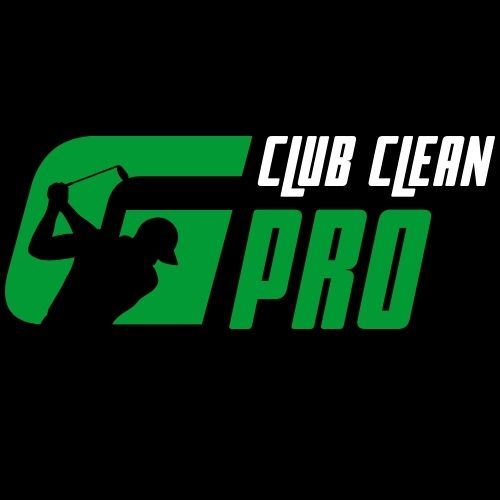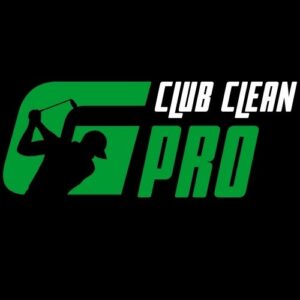How Clean Golf Clubs Boost Your Scoring Consistency
Golf enthusiasts know that precision is key to a great game. One often overlooked aspect of this precision lies in the grooves of your golf clubs. Clean golf clubs, particularly well-maintained grooves, can significantly boost your scoring consistency. The interaction between the club face and the ball at impact is crucial, and clean grooves play a vital role in this split-second connection.
In this article, we’ll delve into the science behind clean golf club grooves and their effect on your game. We’ll explore effective cleaning techniques to keep your clubs in top condition, and discuss how to maintain groove sharpness for optimal performance. By the end, you’ll understand why paying attention to this small detail can lead to big improvements in your golf game.
The Science Behind Clean Golf Club Grooves
How grooves impact spin and control
The grooves on golf clubs play a crucial role in the interaction between the clubface and the ball. They’re designed to channel away debris, grass, and moisture, especially during shots from the fairway or rough. Clean grooves have a significant influence on spin and control, which are vital for improving your game.
When grooves are free from dirt and grass, they can better grip the ball, imparting more backspin. This increased backspin leads to better control of the ball’s flight and trajectory. The additional spin generated by clean grooves contributes to better control of the ball, particularly on approach shots and shots around the green. Golfers can stop the ball more quickly on the green, reducing the risk of it rolling off the putting surface.
Clean grooves also promote a more consistent ball flight. When the grooves are clogged with debris, the clubface may not make solid contact with the ball, leading to inconsistent results in terms of distance and direction. Clean grooves provide a cleaner and more solid contact between the clubface and the ball. This can result in a more efficient transfer of energy, leading to better overall shot performance.
The effects of dirt and debris on performance
Dirt and debris in your grooves can have a significant impact on your performance. When the grooves are filled with mud or grass, they lose their ability to grip the ball effectively. This can lead to a dramatic reduction in spin, which affects both distance and accuracy.
Research has shown that dirty clubs can cause a substantial decrease in ball speed. In one study, shots with dirty grooves lost 7mph of ball speed – 5.5% of the tester’s total – which is a considerable amount. Moreover, backspin, which is essential for control, fell by a staggering 52.5% (to 2,566rpm from 5,399rpm).
The loss of spin also affects the ball’s trajectory. With dirty clubs, the height of shots decreased by six yards (20%), and the descent angle dropped by 16.3% (7°). This means that not only will your shots have less control, but they’ll also be more challenging to stop on the green.
Research on groove cleanliness and scoring
Studies have shown a clear correlation between clean grooves and improved scoring consistency. In one experiment, researchers compared the performance of clean and dirty wedges. The results were eye-opening: the dirty wedge produced an 8.4 degrees higher launch angle, and the spin was more or less cut in half.
This difference in spin and launch angle can have a significant impact on your ability to control the ball, especially in short game situations. Clean grooves allow you to impart the necessary spin to stop the ball quickly on the green, which is crucial for scoring well.
Moreover, clean grooves contribute to consistency in your shots. You want to know what your ball will do every single time you hit it, rather than having unpredictable results. The only way to achieve this consistency is to clean your grooves every single time and ensure they’re in good shape.
It’s worth noting that even slight wear on your grooves can affect performance. If your grooves have started to get worn a little bit, you can lose about 1,000 rpm of spin. This underscores the importance of not only keeping your grooves clean but also replacing your clubs when the grooves start to wear down.
In conclusion, the science behind clean golf club grooves is clear: they’re essential for optimal performance. By maintaining clean grooves, you can ensure better spin, control, and consistency in your shots, ultimately leading to improved scoring on the course.
Effective Cleaning Techniques for Golf Clubs
Daily cleaning routine
Keeping your grooves golf clubs clean is essential for maintaining their performance and extending their lifespan. A daily cleaning routine is a simple yet effective way to ensure your clubs are always ready for action. After each shot, use a damp towel to wipe down the clubface, paying special attention to the grooves. This quick clean prevents the build-up of dirt and grass, which can affect the club’s spin and control.
Many golfers keep a wet towel clipped to their bag for easy access during a round. Some even use a small amount of liquid soap on the towel to help remove stubborn dirt. By making this a habit, you’ll find that your clubs require less intensive cleaning later on.
For a more thorough clean after each round or practise session, use warm water and a soft-bristled brush to gently scrub the clubface and grooves. This removes any remaining debris and keeps your clubs in top condition. Remember to dry your clubs thoroughly with a clean towel before storing them to prevent rust.
Deep cleaning methods
While daily cleaning is crucial, deep cleaning your golf clubs periodically is equally important to maintain their performance. A good rule of thumb is to deep clean your clubs every few rounds or at least once a month if you play regularly.
To start, fill a bucket with warm, soapy water. Many golfers find that a mild dish soap works well for this purpose. Submerge the club heads in the water, being careful to keep the ferrules (where the shaft meets the head) above the waterline to prevent damage.
Let the clubs soak for about 5-10 minutes to loosen any stubborn dirt. Then, use a soft-bristled brush or a dedicated golf club brush to scrub the clubface, grooves, and sole. Pay extra attention to the grooves, as clean grooves are essential for optimal spin and control.
For particularly stubborn dirt, some golfers use a mixture of warm water and oxiclean, which can be very effective at removing grass stains and grime. However, be cautious with this method and don’t leave the clubs soaking for too long.
After scrubbing, rinse the clubs thoroughly with clean water and dry them immediately with a soft towel. Some golfers even use a small amount of WD-40 or car wax to polish the clubheads, giving them extra protection and shine.
Choosing the right cleaning tools
Having the right tools can make cleaning your grooves golf clubs much easier and more effective. A soft-bristled brush is essential for regular cleaning. Many golfers prefer brushes with both nylon and brass bristles, as they can tackle different types of dirt without damaging the club’s finish.
For deep cleaning, consider investing in a groove cleaner. This tool is designed to fit into the grooves of your clubs, helping to remove compacted dirt and grass. However, be gentle when using these tools to avoid damaging the grooves.
A microfiber cloth is another valuable tool for cleaning and drying your clubs. These cloths are soft enough to prevent scratches but effective at removing dirt and moisture.
Some golfers swear by specialised golf club cleaning products like the Grooveit Brush, which features a built-in water tank and pump system. This allows you to spray water directly onto the clubface while scrubbing, making the cleaning process more efficient.
Remember, while it’s important to keep your clubs clean, you don’t need to invest in expensive or complicated tools. A simple combination of a soft brush, a damp towel, and some mild soap can go a long way in maintaining your clubs’ performance and appearance.
By incorporating these effective cleaning techniques into your golfing routine, you’ll ensure that your clubs are always performing at their best, helping you to maintain consistency in your game and potentially improve your scores.
Maintaining Groove Sharpness for Optimal Performance
Signs of worn grooves
Keeping your grooves golf clubs in top condition is crucial for maintaining your scoring consistency. As you play, the grooves on your clubs gradually wear down, affecting their performance. One clear sign of worn grooves is when you notice the ball launching higher than normal, carrying shorter distances, and rolling out further. This change in ball behaviour occurs because worn grooves can’t grip the ball as effectively, resulting in less spin and control.
Another way to check your grooves is by using the ‘fingernail test’. Run your nail down the face of the wedge and notice if it gets caught in each groove. If your nail slides over the grooves without catching, it’s a strong indication that your wedges need replacing. Pay special attention to shots from around the green, as these will give you a more accurate picture of your grooves’ condition than full swings from the fairway.
Professional groove sharpening vs DIY methods
When faced with worn grooves, golfers often consider sharpening them. There are two main approaches: professional sharpening and DIY methods. Professional sharpening is typically more precise and less likely to damage your clubs. However, it can be costly, especially if done frequently.
DIY methods, on the other hand, involve using groove sharpening tools. These tools can help restore some sharpness to old wedges, but they don’t come close to the sharpness of new grooves. Moreover, using these tools carries risks. Sharpening grooves yourself can potentially make your clubs non-conforming to golf rules, as there are strict regulations about groove width, depth, and spacing.
It’s worth noting that even slight wear on your grooves can affect performance. Some studies have shown that sharpened grooves can increase spin by about 600 RPM compared to worn grooves. However, this improvement is still significantly less than what you’d get with a new wedge.
When to replace your wedges
While maintaining your grooves is important, there comes a time when replacement is necessary. Titleist, a leading golf equipment manufacturer, recommends replacing your wedges after approximately 75 rounds of play. For the average recreational golfer who plays regularly, this translates to about every 18 to 24 months.
However, the lifespan of your wedges can vary depending on how often you play and practise, especially if you frequently engage in short game sessions. Factors like playing in sandy conditions or using range balls can accelerate groove wear.
A good rule of thumb is to evaluate your wedges after about 75 rounds of play. If you notice a significant decrease in spin or control, particularly on shots from 40-50 yards in wet rough, it’s probably time for new wedges. Remember, a new wedge can spin up to 2,000 RPM more than a wedge played for over 125 rounds.
In conclusion, while groove sharpening can provide a temporary boost to your club’s performance, it’s not a long-term solution. Regular cleaning and proper care can help maintain your grooves, but eventually, replacing your wedges is the best way to ensure optimal performance. By staying attentive to the condition of your grooves and replacing your wedges when necessary, you can maintain consistency in your short game and potentially improve your scores on the course.
Conclusion
The importance of clean golf club grooves has a significant impact on scoring consistency and overall performance. Maintaining clean grooves ensures better spin, control, and predictable ball flight, leading to improved accuracy and distance control. Regular cleaning, along with proper care and timely replacement of wedges, plays a crucial role in keeping your clubs in top condition and maximising their potential on the course.
To wrap up, paying attention to the cleanliness and condition of your golf club grooves is more than just a matter of equipment maintenance—it’s a key factor in elevating your game. By incorporating effective cleaning techniques and staying aware of groove wear, golfers can enjoy better performance and more consistent results. Remember, clean grooves are a simple yet powerful tool to enhance your golfing experience and potentially lower your scores.











